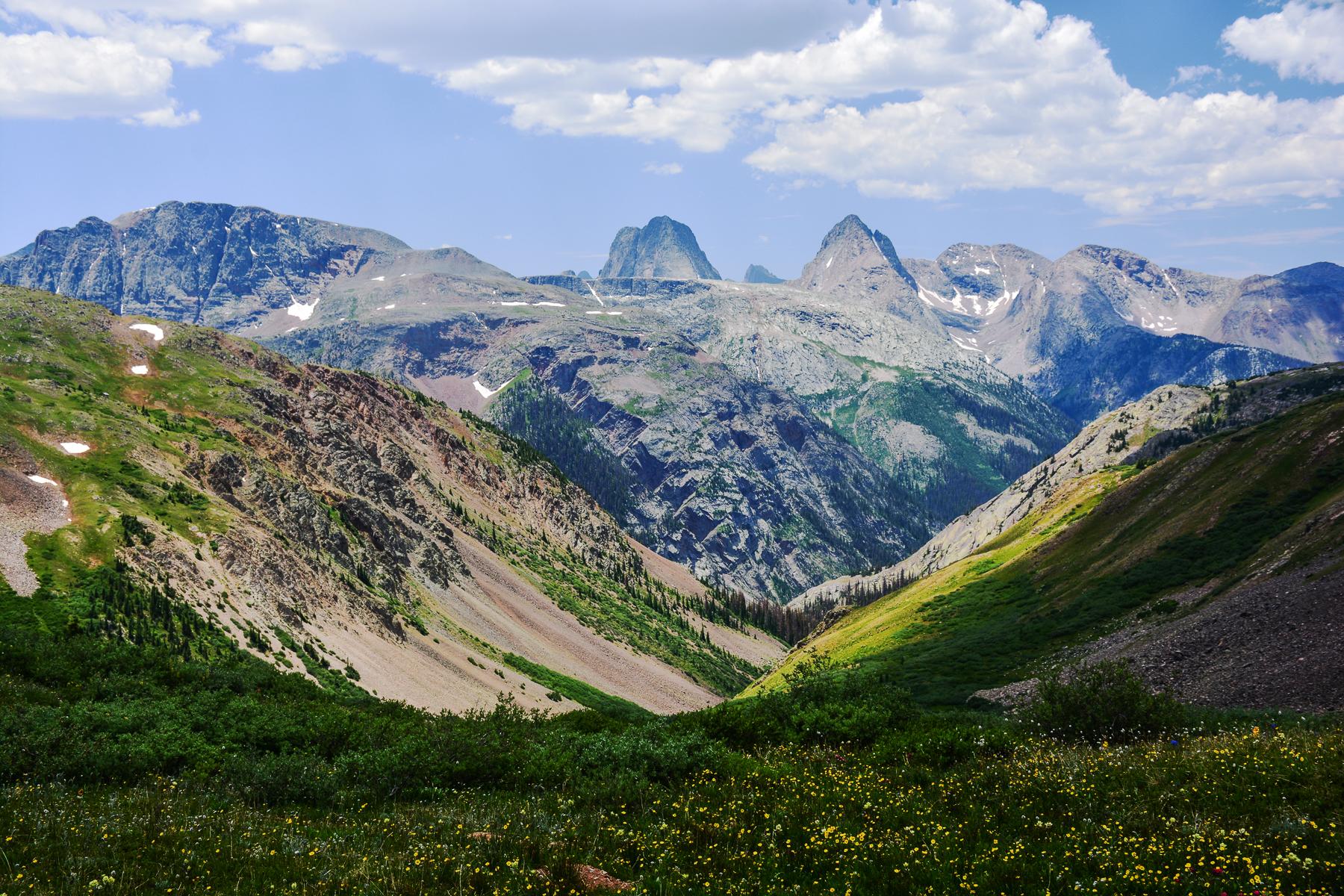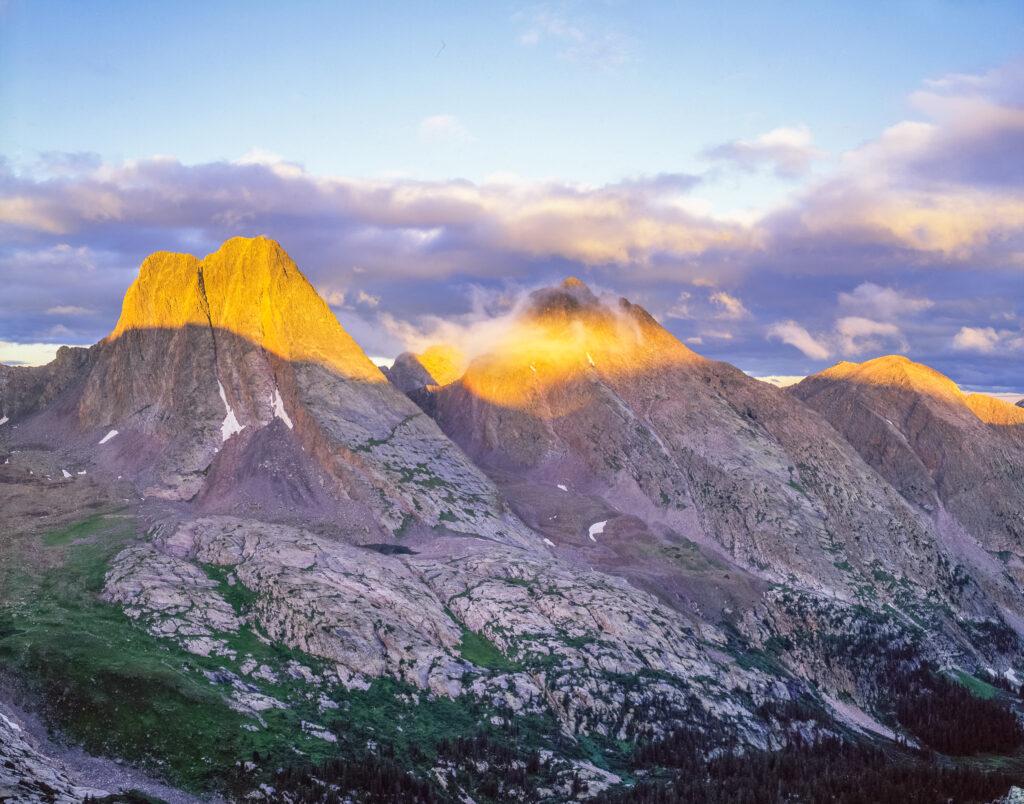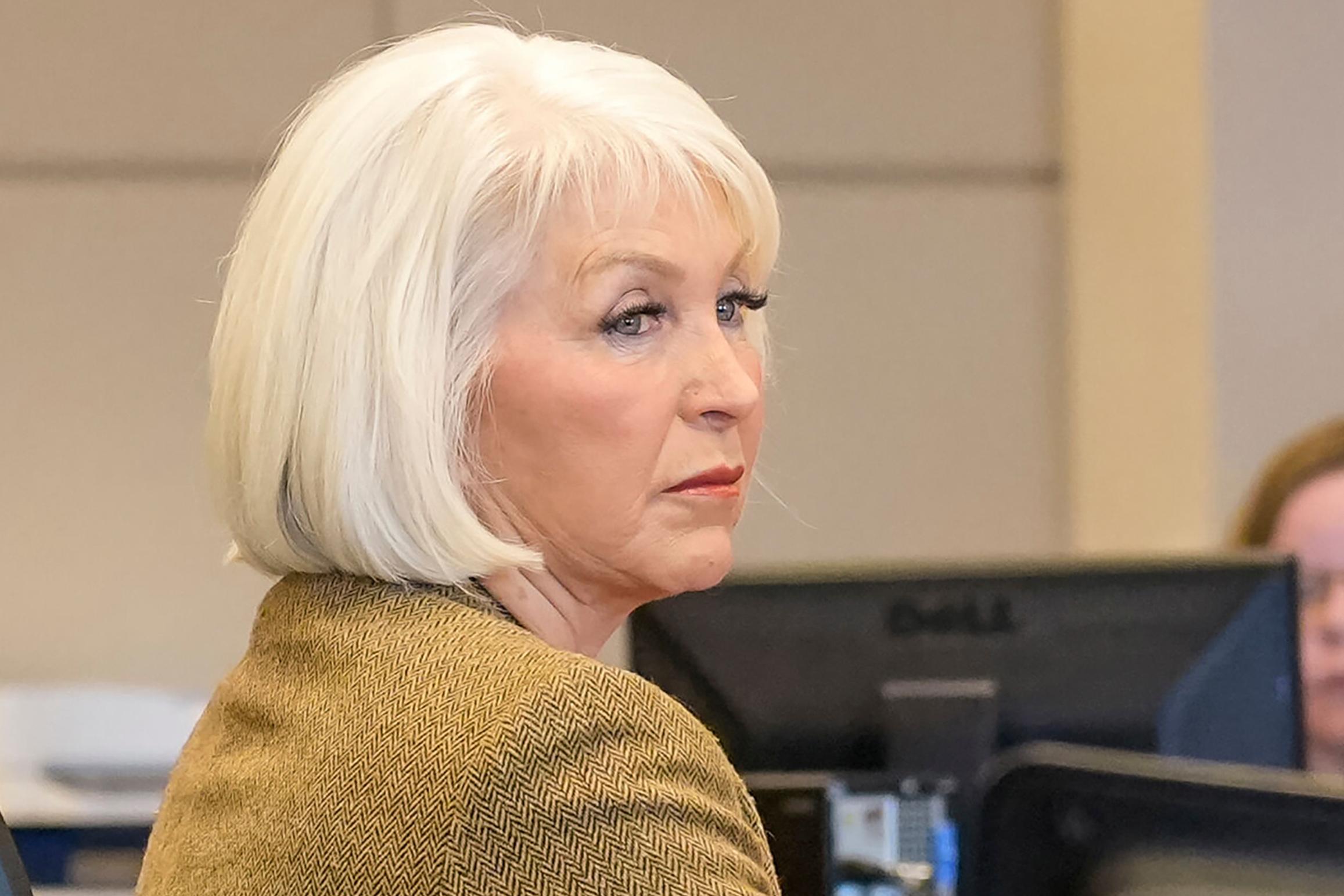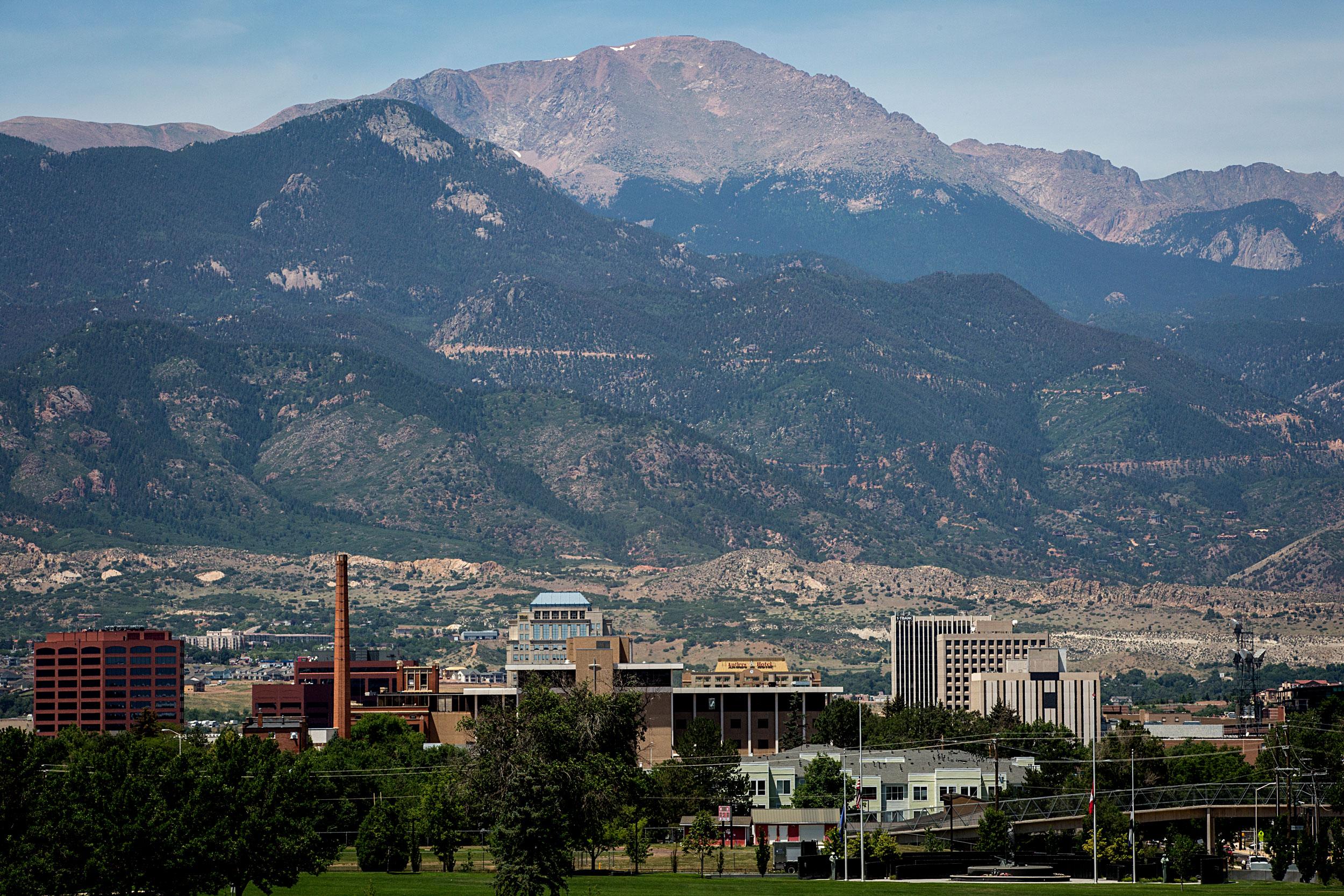
Do you have a favorite Colorado landmark? Maybe the site of an important occasion? For Debbie Peterson, who lives just outside Palisade, the special Colorado place in her heart is Vestal Peak — with good reason. But she’s always wanted to know how it came to be named, so she asked CPR New’s Colorado Wonder for the answer.
Vestal Peak is one of the state’s 13ers, nestled deep in the Grenadier Range of the San Juan Mountains in the state’s Southwest corner. Peterson’s husband, Dave, proposed to her there almost 30 years ago.
“I think we'd been dating about six, eight months at the time, and this was our first backpacking trip. The question was a surprise,” Peterson said.
The trip was in late August. The area’s typical summer storms started rolling in, which prevented them from reaching the top.

“Vestal Peak is pretty much technical climbing except for one ridge that’s a rock scramble. We did not want to be caught up on that ridge with lightning and thunder clouds coming in,” Peterson said. “So there's a lake just below called Vestal Lake … and he picked some wildflowers, got down on his knees and proposed.”
Her husband chose that spot for a reason. Peterson’s maiden name is Vestal. They’ve been hiking together ever since.
“Well, the joke he likes to use is that I was severely oxygen-deprived. And yes, I said yes,” Peterson said.
The first contact I reached out to in the quest to find the origin of Vestal Peak was the U.S. Geological Survey in Washington, D.C. My inquiry was passed on from there to the U.S. Board on Geographic Names. That’s who keeps all the names of mountains, rivers and so on, straight.
The U.S. Board on Geographic Names couldn’t say exactly where Vestal Peak came from. But they could confirm that it’s been in use on topographical maps since the area was first mapped in 1900.
Vestal Peak sits on U.S. Forest Service land in the Weminuche Wilderness. But the Forest Service didn’t have a definitive answer for me, either. Neither did the San Juan County Historical Society archives.
One Forest Service staffer was willing to venture a guess. The Grenadier Range has the look of the hats that classical grenadiers wore, said Mark Roper, a coordinator with the Forest Service.
The word “vestal” traces back to the Roman goddess Vesta, who was linked to hearth and home. Going with the headgear theme, Vestal Virgins wore veils that resemble the peak from certain angles, he said. It might also resemble veils worn by nuns and brides, according to Roper. Vestal has come to mean pure or virginal — that’s the link to nuns and brides.
The Forest Service pointed me to Andrew Gulliford, a professor of history environmental studies at Fort Lewis College in Durango. He didn’t have my answer, but he did understand my apparent wild goose chase.
“Names in Colorado are always fun to research and try and find out,” Gulliford said. “Sometimes there are conflicting lines of evidence.”

Gulliford, while also unsure of where the name came from, walked me through a couple of theories.
“It’s possible that it was named by the Hayden Survey in 1874. They did a lot of triangulation. I know they named Wilson Peak over by Telluride,” Gulliford said.
The Hayden expedition brought back data and maps from all over the American West. They were the first to map the area that would become Yellowstone National Park.
But that’s not the only possibility, according to Gulliford.
“My hunch is that it would've been a prospector headed up into the Chicago Basin area looking for veins of gold and silver, probably coming up out of the Animas River Canyon,” he said.
An unusual geographic feature drew those seeking gold in the region high into the mountains, he said.
“The unique thing about mineralization in the San Juans is some of those veins appear extremely high at 11,000 feet or 12,000 feet. So that's probable to who would've been there. Maybe not at the top of Vestal Peak, but certainly at the base of it,” he said.
Vestal appears in surnames and place names around the world. When it comes to how it got to Colorado, the possibilities are endless. There is no formal process behind naming a mountain.
“Something can have a name because of someone who was there, because of something that happened there, because of something that was seen there,” Gulliford said. “It's probable that you could have mapmakers show up and simply adopt a local name.”
A lot of times, the roots of those local names are lost in the mists of time. Gulliford uses the San Juan’s La Plata Mountains as an example. La plata means silver in Spanish. But there is no record of who bestowed that name on that particular feature, Gulliford said. The name was already there in 1776 when Spanish explorers Dominguez and Escalante came into Southwest Colorado, he said.
“Names have a way of sticking around, sometimes they change, but often they don’t,” he said.









